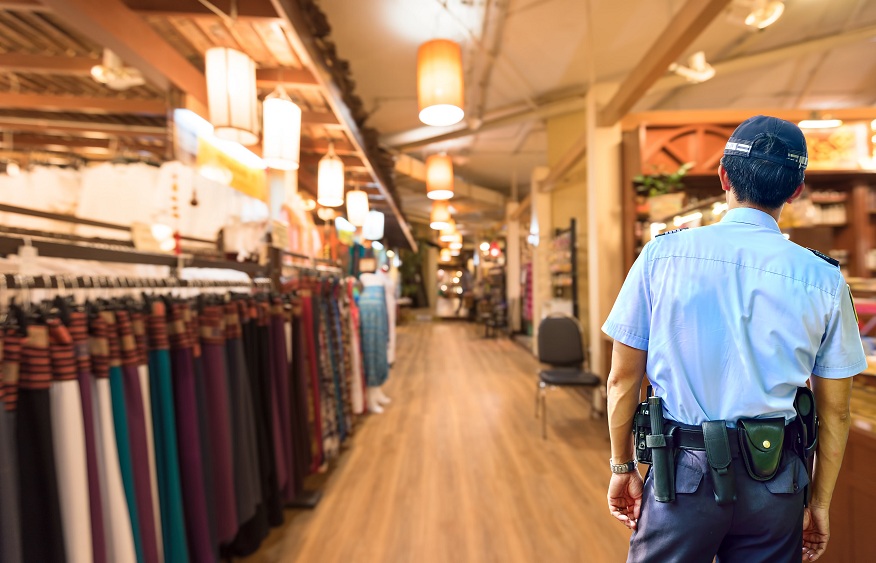Welcome to our blog post on securing retail environments and strategies for loss prevention and customer safety. In today’s world, it is more important than ever for retail businesses to prioritize security measures to protect their assets and ensure the safety of their customers and employees. In this article, we will explore various strategies that retailers can implement to secure their environments and minimize the risk of loss due to theft, vandalism, and other security threats.
Understanding the Importance of Security in Retail
The retail industry is known for being a target of various security threats, including shoplifting, employee theft, fraud, and organized retail crime. These threats not only lead to significant financial loss but also impact the overall shopping experience for customers and the reputation of the business.
Implementing effective security measures is crucial for retailers to create a safe environment that encourages customers to shop with confidence and deters potential criminals. By prioritizing security, retailers can protect their assets, minimize the risk of loss, and enhance the overall shopping experience for their customers.
Implementing Physical Security Measures
Choosing and Installing Surveillance Cameras
Surveillance cameras play a vital role in deterring criminal activities and providing evidence in case of incidents. When choosing surveillance cameras, retailers should consider the layout and size of their store, the desired coverage areas, and the image quality required for effective monitoring. It’s important to install cameras at entry and exit points, near cash registers, and in high-risk areas such as aisles with high-value merchandise.
Furthermore, it is essential to regularly maintain and test the surveillance system to ensure its optimal functionality. Retailers should also consider investing in advanced features such as motion detection and remote viewing capabilities to enhance the effectiveness of their surveillance system.
Implementing Access Control Systems
Access control systems restrict entry to authorized personnel only, thereby minimizing the risk of unauthorized access and internal theft. These systems can include technologies such as keycard access, biometric systems, or keypad entry codes. By implementing access control systems, retailers can regulate access to sensitive areas such as stockrooms, cash offices, and employee-only areas.
It’s crucial to regularly update access codes, revoke access privileges for terminated employees, and monitor access logs for any suspicious activity. By doing so, retailers can maintain a secure environment and ensure that only authorized individuals have access to restricted areas.
Securing Entry and Exit Points
Entry and exit points are vulnerable areas for both external and internal theft. To enhance security, retailers should install security gates or turnstiles at entrances and exits. These systems can help in deterring unauthorized individuals from entering the premises and can also serve as a visual deterrent against theft.
In addition to physical barriers, retailers can also implement measures such as bag checks or electronic article surveillance (EAS) systems, which use sensors to detect tagged merchandise and raise alarms when the items are taken without proper authorization. These measures can help prevent theft and minimize losses.
Installing Alarm Systems
Alarm systems are essential for alerting store personnel and security authorities in case of a security breach or an emergency situation. Retailers should install alarm systems at key locations such as entry and exit points, cash registers, and areas with high-value merchandise.
Modern alarm systems can be integrated with surveillance cameras and access control systems, providing a comprehensive security solution. Retailers should ensure that their alarm systems are regularly tested and properly maintained to ensure their reliability when needed.
Implementing Perimeter Security Measures
Perimeter security measures are designed to secure the external boundaries of a retail facility. These measures can include fencing, gating, and bollards to prevent unauthorized access and vehicle ramming attacks. Surveillance cameras and lighting should also be strategically placed to provide clear visibility of the perimeter.
By implementing effective perimeter security measures, retailers can create a secure environment and deter potential criminals from targeting their premises.
Utilizing Technology for Enhanced Security
Advancements in technology have provided retailers with innovative tools and solutions to enhance security measures. Here are some technological strategies retailers can utilize:
- Implementing video analytics software that can detect suspicious behavior patterns or identify known shoplifters.
- Using electronic shelf tags (ESTs) or RFID technology to track inventory and minimize shrinkage.
- Utilizing electronic article surveillance (EAS) tags and pedestals to deter theft and raise alarms when tagged items are taken without authorization.
- Utilizing biometric systems such as fingerprint or facial recognition for secure access control.
- Implementing remote monitoring systems that allow retailers to monitor their premises in real-time and respond to incidents quickly.
By incorporating these technologies into their security strategies, retailers can benefit from increased efficiency, accuracy, and responsiveness in loss prevention efforts.
Training Staff in Loss Prevention Techniques
Creating a Comprehensive Training Program
One of the key components of a successful loss prevention strategy is training the staff on security protocols and procedures. Retailers should develop a comprehensive training program that covers various aspects of loss prevention, including awareness of security threats, identifying suspicious behavior, emergency response procedures, and effective use of security equipment.
Training programs should be tailored to the specific needs of the retail environment and regularly updated to address emerging security risks and technologies. Regular refresher courses and assessments can help ensure that staff members are well-prepared and equipped to handle security incidents.
Teaching Staff about Common Loss Prevention Risks
It is vital for staff members to have a thorough understanding of common loss prevention risks and how to mitigate them. This includes educating them about the methods and techniques used by shoplifters, fraudsters, and other criminals. By familiarizing the staff with these risks, they can be more alert and proactive in detecting and preventing security breaches.
Retailers should provide training materials, handbooks, and guidelines that outline specific security best practices and encourage staff members to report any suspicious activities or incidents promptly.
Providing Hands-on Training in Loss Prevention Techniques
Theoretical knowledge alone is not sufficient to prepare staff members for real-life security situations. Retailers should provide hands-on training to allow employees to practice loss prevention techniques in simulated scenarios.
This can include role-playing exercises, mock emergency drills, or interactive training sessions facilitated by loss prevention professionals. By providing practical training, retailers can better equip their staff members to respond effectively to security threats.
Implementing Regular Training Reviews and Assessments
Regular reviews and assessments of the training program and staff performance are crucial for identifying areas of improvement and ensuring that security protocols are being followed consistently. Retailers should conduct regular evaluations of staff members’ knowledge and skills related to loss prevention techniques and provide targeted feedback and additional training when necessary.
Furthermore, retailers should encourage open communication with their staff, allowing them to share their observations and suggestions for enhancing security measures.
Promoting a Culture of Vigilance and Alertness Among Staff
Building a culture of vigilance and alertness is an integral part of an effective loss prevention strategy. Retailers should foster an environment where all staff members understand the importance of security and actively participate in maintaining a secure environment.
This can be achieved through ongoing communication, recognition of staff members’ contributions to loss prevention efforts, and implementing reward systems to incentivize vigilance and adherence to security protocols. By involving the entire team, retailers can create a collective sense of responsibility for security and significantly reduce the risk of loss.
Creating a Secure Shopping Experience for Customers
In addition to implementing robust security measures, retailers should prioritize creating a secure and comfortable shopping experience for their customers. This can be achieved through the following strategies:
- Ensuring well-lit parking areas and walkways to enhance visibility and deter potential criminals.
- Implementing crowd management techniques during busy periods to prevent overcrowding and maintain order.
- Training staff members to provide friendly and proactive customer service, which can help deter potential criminals and make customers feel safe.
- Implementing measures to protect customer privacy, such as secure payment systems and strict data protection policies.
- Ongoing communication with customers about security measures and encouraging them to report any suspicious activities or concerns.
By prioritizing the safety and comfort of customers, retailers can build trust and loyalty, leading to repeat business and positive word-of-mouth recommendations.
Evaluating and Updating Security Measures
Conducting Regular Security Audits
To ensure the effectiveness of security measures, retailers should conduct regular security audits to assess vulnerabilities and identify areas for improvement. Security audits can be conducted internally or by hiring external consultants with expertise in retail security.
A comprehensive security audit should encompass a review of physical security measures, surveillance system functionality, access control protocols, training programs, and emergency response plans. The findings from these audits can then be used to develop an action plan for enhancing security measures.
Reviewing the Effectiveness of Current Security Measures
It is essential for retailers to regularly review the effectiveness of their current security measures. This can be done by analyzing incident reports, surveillance footage, and other relevant data. By reviewing this information, retailers can identify any patterns or trends in security breaches and take proactive measures to address them.
Additionally, retailers should seek feedback from staff members, including their observations and suggestions for improving security measures. Regular communication and collaboration with staff can help retailers stay informed about any emerging security risks and make necessary adjustments to mitigate those risks.
Identifying and Addressing Vulnerabilities
Based on the findings from security audits and reviews, retailers should prioritize addressing identified vulnerabilities. This may involve upgrading security systems, installing additional surveillance cameras, revising access control protocols, or improving training programs.
By proactively addressing vulnerabilities, retailers can stay one step ahead of potential threats and minimize the risk of losses due to security breaches.
Implementing New Security Technologies
As technology continues to advance, retailers should stay updated with the latest security technologies and consider implementing them where necessary. This can include advancements in surveillance cameras, access control systems, alarm systems, and other innovative solutions.
By leveraging new security technologies, retailers can benefit from improved efficiency, accuracy, and effectiveness in loss prevention efforts.
Creating a Continual Improvement Plan for Security Measures
Security measures should not be seen as static but rather as an ongoing process of improvement and adaptation. Retailers should create a continual improvement plan that includes regular evaluations, updates to security protocols, and the implementation of new technologies as they become available.
By constantly assessing and enhancing security measures, retailers can maintain a safe and secure environment that protects their business, employees, and customers.
Publisher’s Details:
Vertex Security Systems
400 2nd Ave, New York, NY 10010, United States
(212) 586-3633
Vertexsecurity.com
[email protected]
Enhance retail security with strategies like surveillance cameras, access control, and alarm systems to prevent theft and ensure customer safety. Regular staff training, customer-focused measures, and continuous improvement plans contribute to a secure shopping environment. Learn more about securing retail environments with world-class commercial security solutions in Queens, NY by Vertex Security.
For further insights, read their blog on Ensuring Business Safety: How Commercial Security Solutions Benefit New York City Companies

